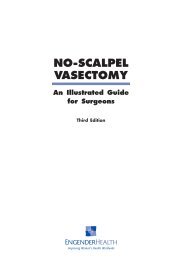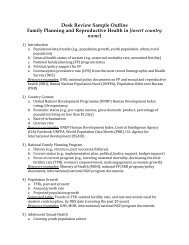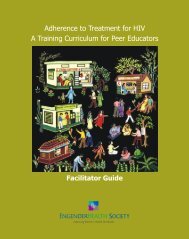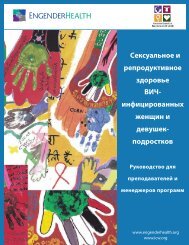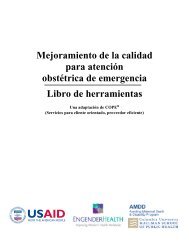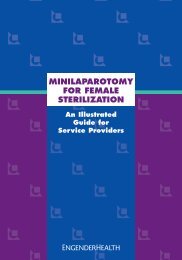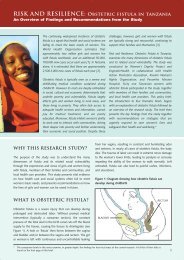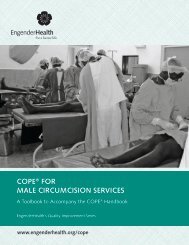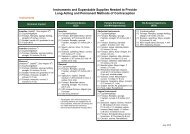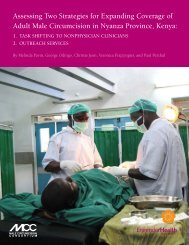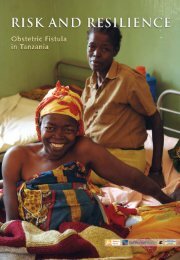Help-Seeking Pathways and Barriers for ... - EngenderHealth
Help-Seeking Pathways and Barriers for ... - EngenderHealth
Help-Seeking Pathways and Barriers for ... - EngenderHealth
Create successful ePaper yourself
Turn your PDF publications into a flip-book with our unique Google optimized e-Paper software.
4. Differences Based on Urban/Rural Location<br />
Certain patterns of help-seeking were noted based on urban <strong>and</strong> rural locations. During the<br />
field work, the research team observed that there is often less police presence <strong>and</strong> a lower<br />
concentration of available services in rural areas. As a result, the WEO assumes a greater<br />
role as an entry point <strong>for</strong> service provision. Moreover, rural women appeared to be less<br />
likely to see the legal <strong>and</strong> justice sector as a legitimate option. While not explicitly discussed<br />
in this study, it is likely that this difference may be due to the critical importance of social<br />
networks in rural areas, <strong>and</strong>, hence, the consequences <strong>for</strong> violating cultural norms <strong>and</strong><br />
expectations may be more severe. It is also likely that the more intensive social capital in a<br />
rural community places greater influence on women to con<strong>for</strong>m to expectations <strong>and</strong> not<br />
cause social or familial problems by reporting their experiences of violence. Taken as a<br />
whole, the maps illustrate the fairly limited options <strong>for</strong> survivors of GBV. Even those<br />
services that do exist are provided by individuals with little specific training. In<br />
consequence, the quality of support a survivor receives is entirely dependent on the<br />
individual provider’s attitudes <strong>and</strong> experience.<br />
The common pathways depicted were focused on first aid <strong>for</strong> severe injuries (in health<br />
facilities) <strong>and</strong> marital reconciliation rather than reacting to GBV as a human rights violation.<br />
This prioritization of “saving” the marriage distracts providers from addressing the core<br />
issue <strong>and</strong> can frequently lead to repeated offences, circuitous response patterns, <strong>and</strong> fatigue<br />
on behalf of both the survivor as well as providers. Very few alternatives exist <strong>for</strong> women<br />
who want to seek justice <strong>for</strong> the violence they have experienced. Survivors who try to<br />
persevere face numerous bottlenecks <strong>and</strong> dead ends. The system itself is lethargic <strong>and</strong> not<br />
designed to respond seriously to instances of GBV. The many barriers to help-seeking are<br />
examined in greater detail in Section D below.<br />
<strong>Help</strong>-<strong>Seeking</strong> <strong>Pathways</strong> <strong>and</strong> <strong>Barriers</strong> <strong>for</strong> Survivors of GBV in Tanzania March 2013<br />
Page 38



